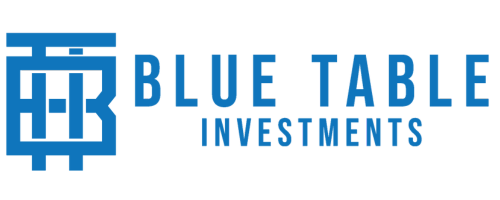Part I.
Congratulations on your transformation process!
Transformation is what you must experience if you are looking to grow your business.
The blueprint for building an investor-grade business resides in three simple steps.
It’s what we call the “IIF Process” which stands for Idea, Implementation, and Funding. These are the phases we use to help our clients achieve their goals.
My name is Emanuel Michael, and I am the co-founder of Business 1on1 with Erica and Emanuel welcome to our site.
If you are new to Business 1on1 then this is where you need to begin.
Even if you are a veteran this will serve as a refresher to read from time to time.
In this post, you will receive an overview of what Business 1on1 is all about and how the IIF Process works for our clients. Entrepreneurs are all in different areas of their business and from time to time we get stuck and need to slow down to speed up. Sometimes we must re-evaluate our goals and make sure we are making the best steps possible to arrive at our destination.
It’s like the quote from Les Brown; “You can’t see the picture because you are in the frame”, however, when you see the big picture you can operate above the business not in it.
Most entrepreneurs feel they need funding to take their business to the next level, but what they really need are systems and processes to get them in position to receive the funding they are seeking.
Business 1on1 was created to give actionable steps to assist the small, midsize enterprise (SME’s) businesses on how to build an investor grade business. This is a business that investors will feel comfortable investing their time and resources in because now the business owner is ready to protect and respect the investor.
Why an Investment Grade Business?
Good question! An investment grade business is a business that covers the 8 primary disciplines needed to run an effective company which are…
- Executive Management
- Marketing
- Sales
- Operations
- Finance
- HR
- Information Technologies
- Quality Assurance
When you think about it who wouldn’t feel comfortable supporting a business that has taken the time to build each one of these departments no matter how large or small it is.
As a business development and project management firm we choose three areas of the 49 process groups to focus on when beginning to work with a new company.
The Idea…..Good Ideas vs. Great Ideas
To properly set these systems in place we first begin with the Idea phase. The initiation phase is the beginning of the project. In this phase, the idea for the project is explored and elaborated. The goal of this phase is to examine the feasibility of the project. Questions to be answered in the initiation phase include the following:
- Why this project?
- Is it feasible?
- Who are possible partners in this project?
- What should the results be?
- What are the boundaries of this project (what is outside the scope of the project)?
Any project generally has five steps to it: Initiating, Planning, Executing, Monitoring & Controlling and Closing. The initiating phase is the first phase, where the project begins, between your team and clients and stakeholders. Any information you have such as the pitch or RFP (request for proposal) stage, from the client, from any background research) is gathered to set and define the project’s scope, timings, and cost. This is the core set up for your project where you identify the stakeholders, the team, goals and objectives and deliverables.
There can be multiple ideas within the main idea for your company. What ideas have you come up with to grow your business short term and long term? Some teams use mind maps. A mind map is a diagram typically used to organize information. Click here for a Mind Map Sample to begin your idea phase.
Part II.
Implementation…Strategic Ideas vs Strategic Implementation
In our previous post we discussed the first step of our I.I.F. Process (idea, implementation, funding process) which is idea. Our next phase is the implementation process however there are levels, upon levels, upon levels that can be utilized to help you achieve your goals. There are six phases of project management.
There are six phases of project management which are
- Initiation Phase
- Definition Phase
- Design Phase
- Development Phase
- Implementation Phase
- Follow-up Phase
As we work on strategizing your idea this is the foundation for designs and development. The final idea is decided on before it is implemented. Depending on the objective of the organization, this stage decides the best strategy for implementation. Almost anyone can create an idea but have a defined process for finalizing that idea is the key.
Implementation is also when we decide a budget for the said project. Implementation requires not only money resources it also requires human resources, technology, training, developing the organizational structure, establishing policy and procedures, etc. etc. which is the operational aspect of your project or your business.
Part III.
Funding…
Now that you have your idea and implementation process in place its time to get your project funded…
Financing the project is to guarantee that the amount of money needed is available. This means that the project management sponsor, to know how much money is needed, one needs to be able to calculate the amount of the cost, benefits and investment. As an entrepreneur you must come up with Creative ways to fund your business or project. Here are a few funding options you could use to fund your project.
Bootstrapping is one way to fund your business which simply means you finance your business with your own funds, through your own savings, personal loans, SBA-backed loans, or credit lines, or with credit cards. Read on for more about loans in the next sections.
When you bootstrap, you’re not giving up any ownership or equity in your company, the way you would if you took angel investment or venture capital.
Bootstrapping also means that you will need to start producing revenue for your business as quickly as possible to continue to fund the business on your own.
The benefit of bootstrapping is that you retain complete control and ownership over your business. Often this looks like moonlighting and working on your idea on the side while still holding down a regular job.
Crowdfunding
Another funding source is Crowdfunding which involves asking a large number of people to fund your business, typically through small donations, and they receive a small gift like branded merchandise rather than financial return. Most crowdfunding platforms are low risk because they don’t require business owners to repay the money to the donors. The one downside is that a crowdfunding campaign is also time-intensive to put together, so it is important to make sure it is a good fit for your business.
Small Business Associations (SBA)
The SBA in the U.S. offers a few different loan programs through participating banks across the country. These programs are designed specifically for small businesses and are typically leak risky and more accessible. The SBA itself doesn’t actually do the lending—you’ll still need to strike up a relationship with a loan officer at your local bank, credit union, or nonprofit financial intermediary to access the programs.
Bank Loans
A bank loan provides medium or long-term finance. The bank sets the fixed period over which the loan is provided (ex: 3, 5, or 10 years), the rate of interest, and the timing and amount of repayments. Typically, it’s wise to work with a credit union or other local bank so that you can work with someone directly on your loan application.
In addition to your business plan, the bank will require that you provide some security (“collateral) for the loan. However, in the case of a startup, this security often comes in the form of personal guarantees provided by the entrepreneur.
Insurance Policies
If you don’t know now you know, you’re allowed to take loans against your life insurance policy. This may be done in a variety of methods, but the easiest is taking a loan directly through your insurance policy holder against the value of your life policy. Three types of life insurance policies you may use to take a loan are (1) whole life insurance, (2) universal life policy or a (3) variable life policy.
The benefit of a life insurance loan for an entrepreneur are (1) no credit or background checks that will affect your credit history, (2) flexible payment schedules because you’re not required to make monthly repayments and (3) lower interest rates.
This is an excellent way to utilize funds as you grow your business.
Now let’s take your business from Idea, To Implementation to Funding. Download our 10-minute investor grade business audit here…

